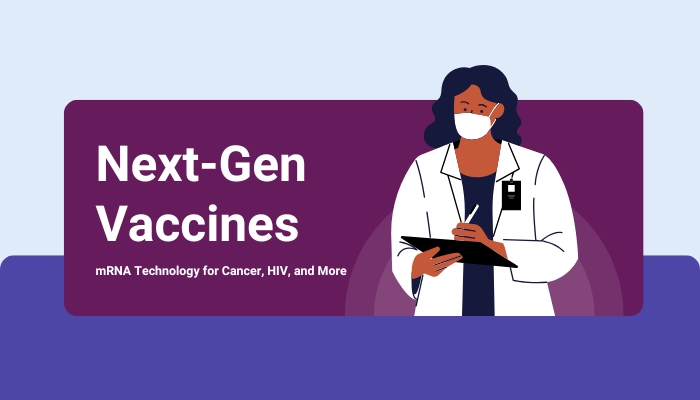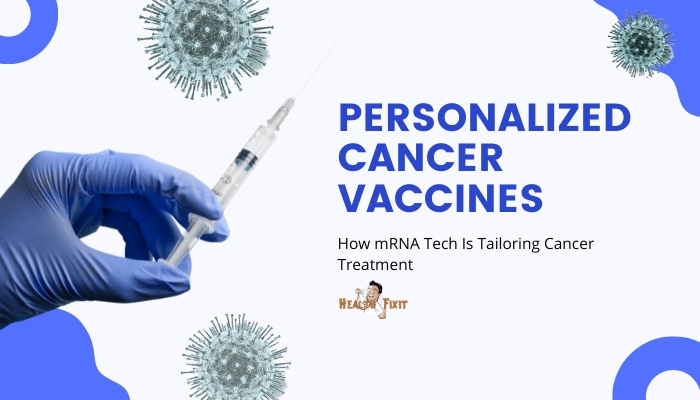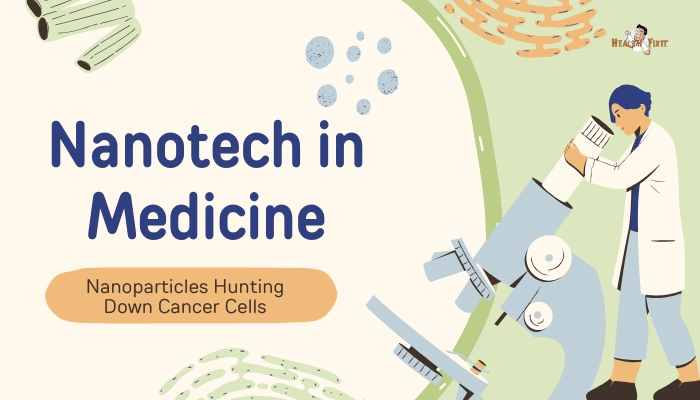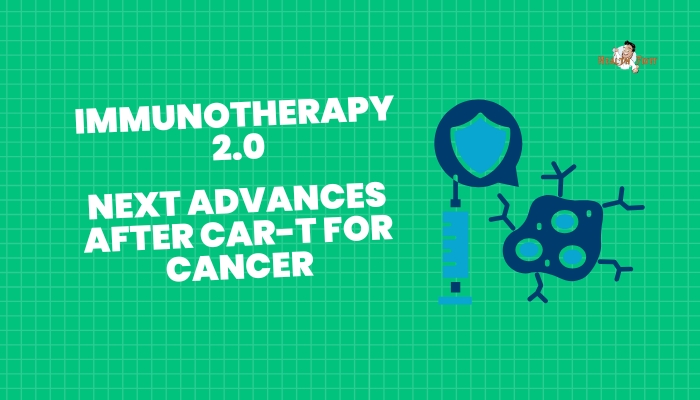Introduction
Cancer is not a single disease but rather a group of disorders with distinct biological and clinical characteristics. Traditionally, chemotherapy has been a primary treatment for many types of cancer. It uses chemical agents that target rapidly dividing cells, including cancer cells.
However, chemotherapy also affects healthy cells. This can lead to unwanted effects such as hair loss, fatigue, and increased infection risk. These drawbacks have driven efforts to find alternative options that offer better outcomes with fewer complications.
Emerging therapies include immunotherapy, gene editing, and precision medicine. Scientists continue to discover tumor-specific markers and biochemical pathways.
These insights lead to new methods that can precisely identify and target malignant cells. Meanwhile, cancer prevention and early detection strategies are improving.
As a result, more cancers are identified at an earlier stage, when treatments are more effective. Yet, many cancer types remain a challenge. This prompts ongoing research into innovative technologies that disrupt cancer cell growth.
Many ask: will chemotherapy remain the standard, or will new treatments replace it? This article explores the evolution of chemotherapy, its limitations, and the advancements that could potentially reduce its central role in cancer therapy over the next decade and beyond.
Overview of Chemotherapy: A Historical Perspective
Chemotherapy was developed in the mid-20th century. Early discoveries stemmed from wartime research involving nitrogen mustard, initially studied as a chemical agent. Over time, scientists found it could kill rapidly dividing cancer cells. This accidental discovery opened the door to the systematic study of chemical compounds for cancer treatment.
- Mid-20th Century: Nitrogen mustard agents introduced.
- 1970s–1980s: Combination chemotherapy protocols to tackle resistant cancers.
- 1990s: Refined dosing schedules to reduce side effects.
- 2000s–present: Targeted therapies and immunotherapies emerge, highlighting new treatment directions.
Rationale Behind Chemotherapy
Chemotherapy’s main principle is simple: cancer cells divide more frequently than normal cells. By interfering with cell division or DNA synthesis, chemotherapy aims to eliminate malignant cells faster than healthy cells can renew themselves. However, any cell that proliferates rapidly (e.g., hair follicles, the digestive tract lining, bone marrow) can also be harmed. This broad attack can cause significant toxicity and reduced quality of life during treatment.
Common Side Effects
Chemotherapy side effects vary based on the specific drugs and regimen. Some frequent side effects include:
- Hair Loss: Because hair follicles divide quickly, they are prone to damage.
- Nausea and Vomiting: The digestive tract is frequently affected.
- Fatigue: This can result from both reduced nutrition and anemia.
- Infections: Lowered white blood cell counts can weaken immune defenses.
- Peripheral Neuropathy: Certain drugs damage nerve cells, leading to tingling sensations.
Despite these effects, chemotherapy can play a critical role in achieving remission, especially for blood cancers and certain solid tumors. Yet, the search for better tolerability and personalized interventions continues.
The Rise of Targeted Therapies
Targeted therapies differ from chemotherapy. They use small molecules or antibodies engineered to bind cancer-specific proteins. This can hinder tumor growth while sparing healthy tissues. These therapies have gained importance as researchers identify genetic and molecular changes in cancer cells.
Mechanism of Action
Targeted drugs typically block molecular pathways that are essential for cancer cell survival. Examples include:
- Tyrosine Kinase Inhibitors (TKIs): These block signals that promote cell division.
- Monoclonal Antibodies: Antibodies bind to antigens found predominantly on tumor cells.
- Angiogenesis Inhibitors: These prevent the tumor from creating new blood vessels, cutting off nutrient supply.
By zeroing in on cancer-specific markers, targeted therapies can reduce collateral damage. However, not all tumors have well-defined molecular targets. Additionally, some cancers develop resistance when they mutate around the blocked pathways.
Examples of Successful Targeted Therapies
- Imatinib (Gleevec): Transformed treatment for chronic myelogenous leukemia (CML). It inhibits the abnormal BCR-ABL protein.
- Trastuzumab (Herceptin): A monoclonal antibody used for HER2-positive breast cancer. It binds to the HER2 receptor, slowing tumor growth.
- EGFR Inhibitors: Beneficial in certain lung cancers with mutations in the epidermal growth factor receptor.
While targeted therapies may have fewer side effects than traditional chemotherapy, they are not side-effect free. Patients may still experience skin rashes, diarrhea, or other problems depending on the specific drug’s mechanism. Additionally, targeted therapies often come with a high financial cost, which can limit access.
Immunotherapy: Harnessing the Body’s Defenses
Immunotherapy aims to mobilize the body’s immune system against cancer cells. Instead of directly killing malignant cells with chemicals or radiation, immunotherapy strengthens the patient’s own immune response.
Categories of Immunotherapy
- Checkpoint Inhibitors: Tumor cells use certain “checkpoints” to evade immune attacks. Drugs like pembrolizumab or nivolumab release these checkpoints, allowing immune cells to attack cancer more effectively.
- Chimeric Antigen Receptor (CAR) T-Cell Therapy: Immune cells (T cells) are engineered to recognize specific proteins on cancer cells. These modified T cells are then reinfused, where they locate and destroy tumors.
- Cancer Vaccines: Some vaccines train the immune system to spot tumor-specific antigens before they can grow unchecked.
Advantages of Immunotherapy
- Long-Lasting Effects: In some cases, immune cells retain a “memory” of cancer antigens, reducing the likelihood of recurrence.
- Specific Targeting: Immunotherapy spares healthy cells to a greater extent.
- Combination Potential: Immunotherapy can work with chemotherapy, targeted drugs, or radiation for a synergistic effect.
Yet, immunotherapies can also produce serious immune-related toxicities. Some patients develop an overactive immune response attacking normal tissues. Early identification and management of these effects are crucial. Additionally, not all patients respond to immunotherapy. Current research aims to identify biomarkers that predict better outcomes.
Gene Editing and Gene Therapy
Gene editing approaches such as CRISPR-Cas9 can modify segments of DNA in living organisms. In oncology, scientists envision using these tools to:
- Insert genes that improve the immune system’s ability to recognize cancer.
- Disable mutations within cancer cells.
- Reverse resistance mechanisms to standard treatments.
CRISPR-Cas9 in Cancer
Scientists engineer “guide” RNA to direct the Cas9 enzyme to a specific genome region. Once the DNA is cut, cells can insert or delete genetic fragments. In cancer research, this technology can potentially remove genes that help tumors evade therapy.
- Potential Benefits: Precise targeting, potential for permanent correction of harmful mutations, synergy with other therapies.
- Challenges: Off-target edits leading to unplanned mutations, delivery of gene-editing machinery into tumors, and ethical concerns around genetic manipulation.
Viral Vectors and Oncolytic Viruses
Gene therapy often relies on viral vectors to deliver therapeutic genes. Oncolytic viruses are viruses that infect and kill cancer cells while sparing normal cells. Some oncolytic viruses also stimulate the immune system by releasing tumor antigens. Trials investigating these viruses suggest they could enhance response rates, particularly when combined with other treatments like immunotherapy or radiation.
Precision Medicine and Personalized Care
Precision medicine in oncology involves tailoring treatments to each patient’s tumor biology. Physicians analyze genetic profiles of tumor tissue. This allows them to select therapies more likely to be effective.
Biomarkers and Companion Diagnostics
Biomarkers are measurable indicators that help predict treatment response or disease progression. For instance, testing a tumor for the EGFR mutation can determine if EGFR inhibitors will be beneficial. Similarly, testing for PD-L1 expression can indicate if a patient is a good candidate for certain immunotherapies. Companion diagnostics are laboratory tests that detect these biomarkers, guiding clinicians to personalized strategies.
Multi-Omics Approach
- Genomics: Examines DNA mutations and chromosomal abnormalities.
- Transcriptomics: Looks at RNA, revealing which genes are actively expressed.
- Proteomics: Studies protein expression in cells, tissues, or blood samples.
- Metabolomics: Analyzes metabolic products that might correlate with cancer progression.
By integrating these data layers, oncologists aim to construct a comprehensive map of each patient’s tumor. This map can inform specific drug choices while identifying ways to minimize side effects. Ongoing advances in machine learning enable researchers to handle large multi-omics datasets, potentially revealing subtle patterns that guide treatment decisions.
Will Chemotherapy Disappear?
Although new treatments offer improved specificity, chemotherapy remains a cornerstone for many cancers. Combination regimens that blend chemotherapy with immunotherapy or targeted drugs can yield strong results. For instance, a breast cancer patient might receive a combination of doxorubicin (a chemotherapy agent) and trastuzumab (a targeted antibody) to target the tumor comprehensively.
However, multiple factors influence whether chemotherapy will remain dominant:
- Tumor Type: Some cancers are especially sensitive to chemotherapy (e.g., certain lymphomas, testicular cancer). In these cases, established chemotherapy can cure many patients.
- Cost and Access: Emerging treatments like CAR T-cell therapy may be out of reach for some populations due to cost or limited availability. Chemotherapy, while still expensive, is often more readily covered by insurance.
- Research Pace: Breakthroughs can disrupt current standards if trials confirm they are safe and effective for the majority of patients. Large-scale adoption typically requires multiple phases of clinical testing, regulatory approval, and demonstration of real-world success.
Given these variables, chemotherapy is unlikely to vanish in the near term. However, ongoing developments may reduce its necessity over time.
Combining Modalities for Better Outcomes
Most experts envision a future where various treatment modes complement one another. Each method can address different tumor vulnerabilities.
Example of a Combined Approach
- Immunotherapy + Chemotherapy: Using drugs like pembrolizumab along with traditional chemotherapy can prime the immune system. Chemotherapy may kill some tumor cells and release antigens that immune cells recognize.
- Targeted Therapy + Immunotherapy: Targeted drugs shut down critical growth signals, while immunotherapy encourages T cells to clean up remaining malignant cells.
- Radiation + Immunotherapy: Radiation can shrink the tumor and expose more tumor antigens, making immunotherapies more effective.
This table summarizes potential synergies:
| Combination | Purpose | Key Benefit |
| Chemotherapy + Immuno. | Kill cells + stimulate immune response | Broader initial tumor kill plus immune activation |
| Targeted Therapy + Immuno. | Block growth signals + harness immune system | Precision plus adaptive immunity |
| Radiation + Immuno. | Local tumor kill + antigen exposure | Enhanced immune recognition of tumor cells |
| Gene Editing + Immuno. | Genetically modify T cells + direct them at tumors | Precise cellular targeting with minimal normal cell damage |
Many oncologists see these combinations as the best path to higher cure rates. Treatment plans can be adjusted over time based on how a patient responds, further personalizing the approach.
Reducing Toxicity in Cancer Treatment
A major driver for moving away from chemotherapy is toxicity. Treatments such as immunotherapy and targeted drugs can still cause side effects, but they often spare healthy tissues more effectively. As research progresses, scientists seek new ways to further reduce collateral damage.
Personalized Dosing
Precise dosing strategies help minimize toxicity. Pharmacogenomics investigates how an individual’s genetic makeup affects drug metabolism. By analyzing certain gene variations, doctors can anticipate how quickly a patient metabolizes chemotherapy or targeted agents. This helps fine-tune dosage to maintain efficacy while limiting harm.
Nanomedicine
Some researchers focus on nanomedicine, which uses nanoscale carriers to deliver drugs directly to tumors. Nanoparticles can be engineered to release chemotherapy or other agents only in the tumor microenvironment. This approach decreases exposure to healthy cells, potentially reducing side effects:
- Liposomes: Tiny lipid spheres that encapsulate drugs.
- Polymeric Nanoparticles: Synthetic particles that carry anticancer compounds.
- Metallic Nanoparticles: Often used for imaging and drug release under certain conditions (e.g., triggered by laser light).
These precision delivery strategies could maintain chemotherapy’s cancer-killing benefits while lowering systemic toxicity.
The Economic and Ethical Dimensions
Cancer care costs can be high. New therapies, like CAR T-cell therapy or advanced targeted drugs, may cost tens or hundreds of thousands of dollars per course. Insurance coverage, governmental support, and research funding all shape patient access.
- Access Disparities: Low-income regions might rely heavily on established chemotherapy protocols due to limited resources. Meanwhile, advanced therapies remain scarce.
- Resource Allocation: Governments and hospitals must decide where to invest. Is it better to fund widespread chemotherapy access or concentrate on fewer patients receiving cutting-edge treatments?
- Ethical Considerations: Gene editing brings ethical debates. Advocates see it as a path to curing inherited cancers. Opponents worry about unforeseen genetic consequences and inequitable availability.
Balancing innovation with affordability remains a key challenge. As scientific progress continues, policymakers, health providers, and research institutions must collaborate to ensure that life-saving therapies reach all patients who need them.
Ongoing Research Trends
Scientists continue to seek treatments that are both effective and minimally harmful. This pursuit spurs rapid progress in multiple areas:
- Multi-Omics Data Integration: Combining genetic, proteomic, and metabolic data to decode cancer in finer detail.
- AI-Driven Drug Discovery: Machine learning algorithms identify promising compound candidates for cancer therapy.
- Biomarker Identification: Pinpointing markers that predict a patient’s likely response to immunotherapy or targeted agents.
- Tumor Microenvironment Studies: Examining how immune cells, fibroblasts, and extracellular matrices in tumors can be re-engineered for better therapy outcomes.
These lines of research intersect with clinical trials that test innovative drugs and combinations in real patients. Some clinical trials involve “adaptive designs,” where data from enrolled participants helps refine the protocol on the fly. This structure allows researchers to pinpoint successful treatment arms early, accelerating progress.
Prospects for a Future Without Chemotherapy
The idea of a cancer therapy landscape free of chemotherapy is attractive but complicated. Chemotherapy has proven curative in diseases like Hodgkin lymphoma and testicular cancer. New modalities, however, may gradually replace chemotherapy as first-line therapy in many scenarios, especially if they offer:
- Equal or Better Efficacy: Comparable remission rates without long-term toxicity.
- Cost-Effectiveness: Sustainable production, insurance coverage, and global distribution.
- Safety and Tolerability: Fewer hospital admissions, higher quality of life, and fewer severe side effects.
Eventually, chemotherapy might become a second- or third-line therapy. In some cases, it may serve as a short induction phase that transitions into maintenance therapy with immunotherapy or targeted drugs.
Patient-Centered Approaches
Another trend is a growing emphasis on patient-centered care. This approach looks beyond tumor biology to consider each patient’s overall health status, mental well-being, social support network, and personal preferences.
Quality of Life Measures
Modern oncology increasingly tracks patient-reported outcomes:
- Pain Levels: Assessing if a treatment reduces or increases discomfort.
- Fatigue: Monitoring if therapy intensifies tiredness.
- Emotional Health: Determining if a patient experiences depression or anxiety.
- Social Impact: Evaluating if treatment schedules disrupt daily life and family responsibilities.
By aligning with patient priorities, physicians can weigh the risks and benefits of chemotherapy against more precise treatments.
Psychosocial Support
Many cancer centers offer counseling, support groups, and nutritional advice. Integrative therapies such as meditation or light exercise classes may help patients manage side effects. As new treatments reduce physical toxicity, psychosocial support remains a crucial part of holistic care. This ensures that fewer adverse effects do not overshadow the emotional and mental strains of a cancer diagnosis.
Prevention and Early Detection: Critical Pillars
If scientists manage to reduce chemotherapy use, prevention and early detection will also play significant roles. Early-stage tumors often respond better to less intensive therapy.
Screening Programs
- Mammograms: Early detection of breast cancer can mean less aggressive therapy.
- Colonoscopy: Removing precancerous polyps can avert full-blown cancer.
- Low-Dose CT Scans: Helpful in detecting early lung cancer in high-risk groups.
More advanced biomarkers and imaging techniques may further refine screening. Liquid biopsies, which search for tumor DNA in blood samples, could detect early cancers before they become symptomatic. Early intervention often reduces the need for extended chemotherapy cycles.
Conclusion
Chemotherapy has long been a cornerstone of cancer therapy. Its effectiveness against certain tumors and its cost relative to emerging treatments suggest it will not vanish immediately. However, the progress seen in immunotherapy, targeted therapies, gene editing, and precision medicine indicates that the medical community is moving toward less toxic and more personalized interventions. Patients may benefit from a range of combination therapies tailored to their specific cancer subtype.
Looking ahead, the goal is to improve outcomes while minimizing side effects and preserving patient quality of life. Chemotherapy will likely remain part of this effort, but in a more limited capacity. It may be used alongside or in sequence with immunotherapy, targeted therapies, and other advanced options. As research continues, new frontiers in biology and technology could finally make certain types of chemotherapy obsolete, at least for some cancers. Achieving this will require collaboration among researchers, clinicians, policymakers, and patient advocates to ensure that groundbreaking treatments become both effective and widely accessible. In the end, the future of cancer treatment is not about discarding old methods entirely, but refining strategies to give patients the best chance at long and healthy lives.
References
- DeVita VT, Chu E. A history of cancer chemotherapy. Cancer Res. 2008;68(21):8643–53.
- Druker BJ. Perspectives on the development of imatinib and the future of cancer research. Nat Med. 2009;15(10):1149–52.
- Slamon DJ, Leyland-Jones B, Shak S, et al. Use of chemotherapy plus a monoclonal antibody against HER2 for metastatic breast cancer. N Engl J Med. 2001;344(11):783–92.
- Pardoll DM. The blockade of immune checkpoints in cancer immunotherapy. Nat Rev Cancer. 2012;12(4):252–64.
- Maude SL, Frey N, Shaw PA, et al. Chimeric antigen receptor T cells for sustained remissions in leukemia. N Engl J Med. 2014;371(16):1507–17.
- Doudna JA, Charpentier E. Genome editing. The new frontier of genome engineering with CRISPR-Cas9. Science. 2014;346(6213):1258096.
- Russell SJ, Peng KW. Oncolytic virotherapy: A contest between apples and oranges. Mol Ther. 2017;25(5):1107–16.
- Garraway LA, Lander ES. Lessons from the cancer genome. Cell. 2013;153(1):17–37.
- Chen DS, Mellman I. Elements of cancer immunity and the cancer–immune set point. Nature. 2017;541(7637):321–30.
- Jain RK, Stylianopoulos T. Delivering nanomedicine to solid tumors. Nat Rev Clin Oncol. 2010;7(11):653–64.
- Institute of Medicine (US) Committee on Psychosocial Services to Cancer Patients/Families in a Community Setting. Cancer Care for the Whole Patient. Washington DC: National Academies Press; 2008.
- Ferlay J, Colombet M, Soerjomataram I, et al. Cancer incidence and mortality worldwide. Int J Cancer. 2019;144(8):1941–53.
- Hanna GJ, Adkins D. Checkpoint inhibitors in head and neck cancer. Cancer J. 2018;24(4):221–7.
- Siegel RL, Miller KD, Jemal A. Cancer statistics, 2023. CA Cancer J Clin. 2023;73(1):17–48.






